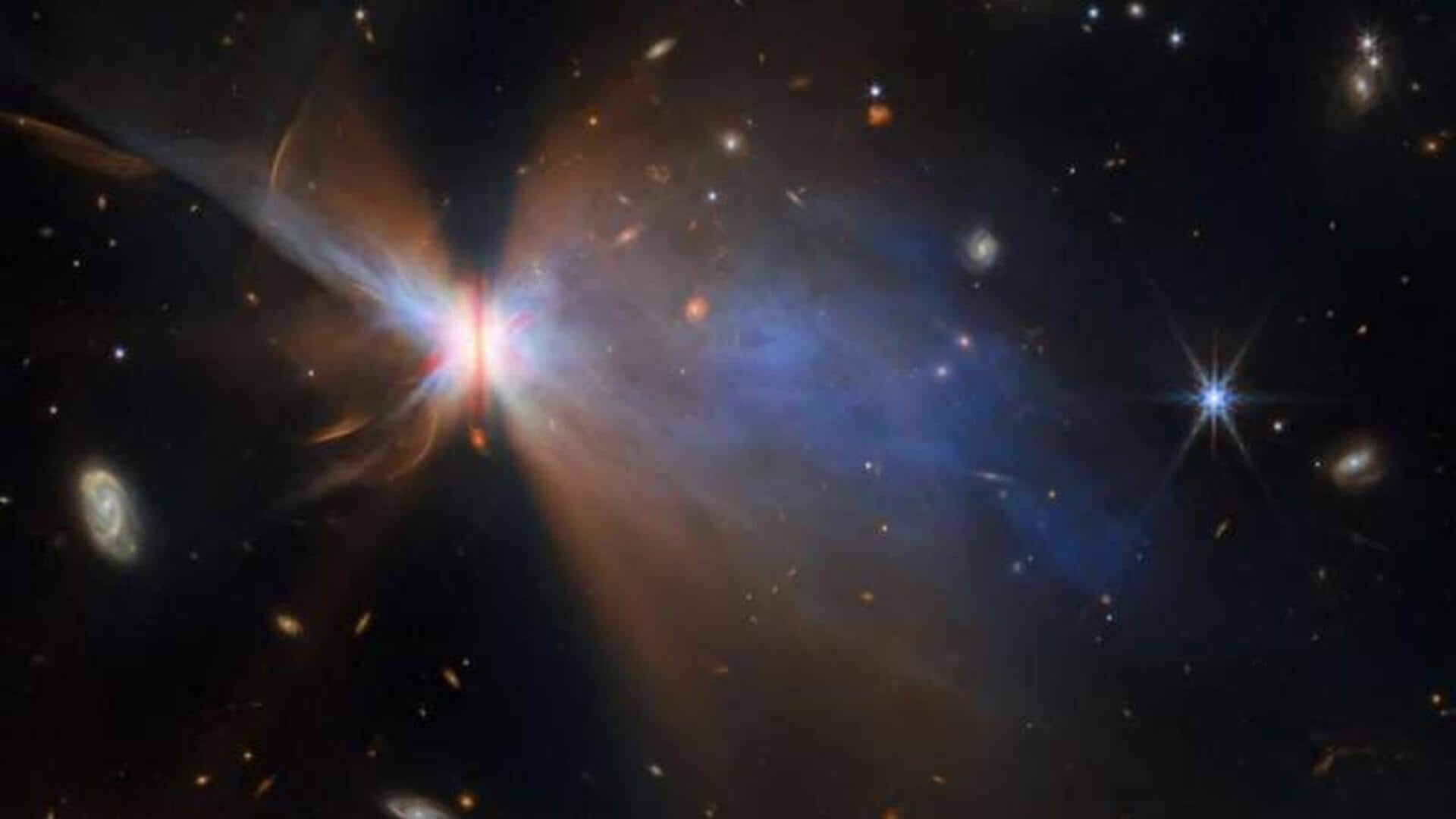
Watch: Webb telescope snaps a planet-forming disk 525 light-years away
What's the story
The James Webb Space Telescope (JWST) has captured a stunning image of IRAS 04302+2247, a planet-forming disk located about 525 light-years away in the Taurus star-forming region. The observation provides valuable insights into the properties and growth of dust grains within protoplanetary disks, revealing important details about the early stages of planet formation.
Stellar nurseries
Protoplanetary disks are crucial for understanding planet formation
In stellar nurseries across the galaxy, baby stars are forming in giant clouds of cold gas. As these young stars grow, the surrounding gas collects into narrow, dusty protoplanetary disks. This process sets the stage for planet formation. Observations of distant protoplanetary disks can help researchers understand what happened about 4.5 billion years ago in our own solar system when the Sun and other planets formed.
Planet formation
What is IRAS 04302+2247?
IRAS 04302+2247 or IRAS 04302 for short, is an example of a protostar, a young star that is still gathering mass from its environment. This star is surrounded by a protoplanetary disk in which baby planets might be forming. From Webb's vantage point, the disk of IRAS 04302 appears edge-on as a narrow line of dusty gas blocking light from the budding protostar at its center.
Protoplanetary disk
Disks are where planets form
The dusty gas in the protoplanetary disk of IRAS 04302 is fuel for planet formation. It provides an environment where young planets can bulk up and pack on mass. When seen face-on, these disks can show structures like rings, gaps, and spirals that may indicate the presence of baby planets or other phenomena like gravitational instabilities or regions where dust grains are trapped.
Disk thickness
The thickness of disk indicates how efficiently dust is growing
The edge-on view of IRAS 04302's disk shows its vertical structure, including how thick the dusty disk is. Dust grains migrate to the midplane of the disk, settle there and form a thin, dense layer that is conducive to planet formation. The thickness of this layer indicates how efficiently dust grains are growing in this protoplanetary disk, a key step toward planet formation.
Nebulae
IRAS 04302 has earned the nickname 'Butterfly Star'
The dense streak of dusty gas running vertically across this picture cocoons IRAS 04302, blotting out its bright light so Webb can more easily image the delicate structures around it. This reveals two gauzy reflection nebulas on either side of the disk, illuminated by light from the central protostar reflecting off of the nebular material. The appearance of these two reflection nebulas has earned IRAS 04302 the nickname "Butterfly Star."